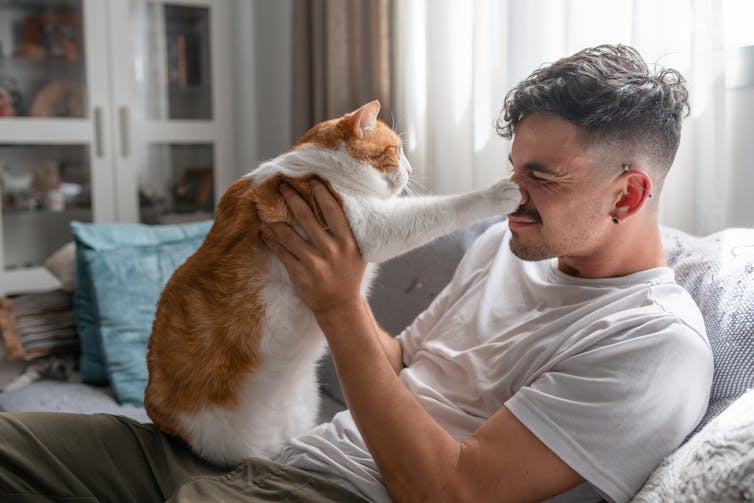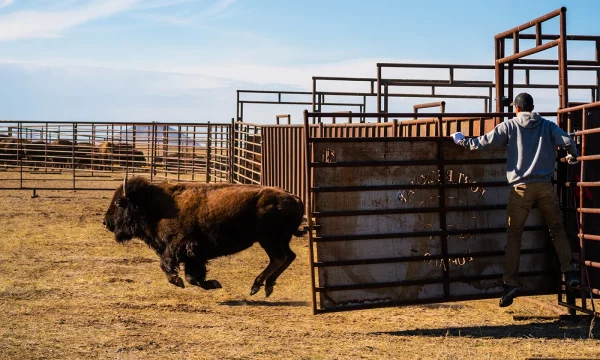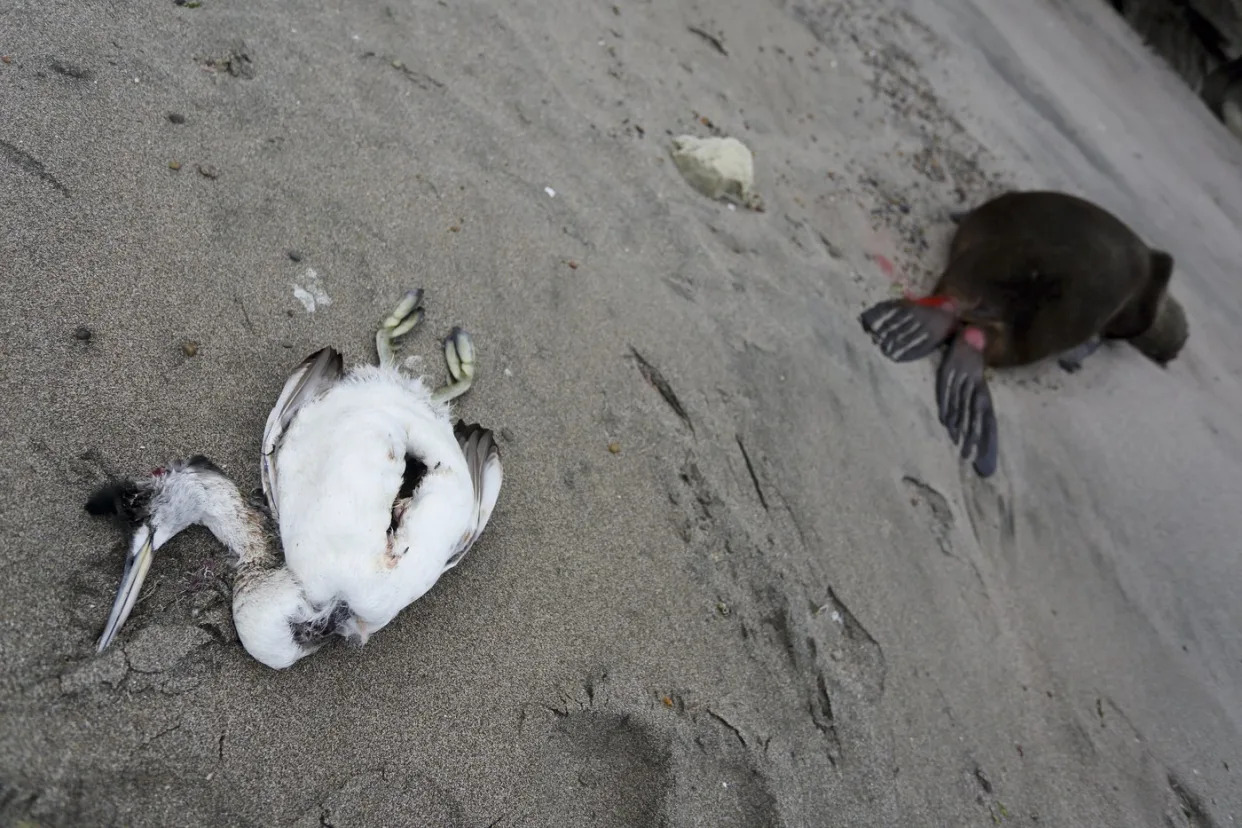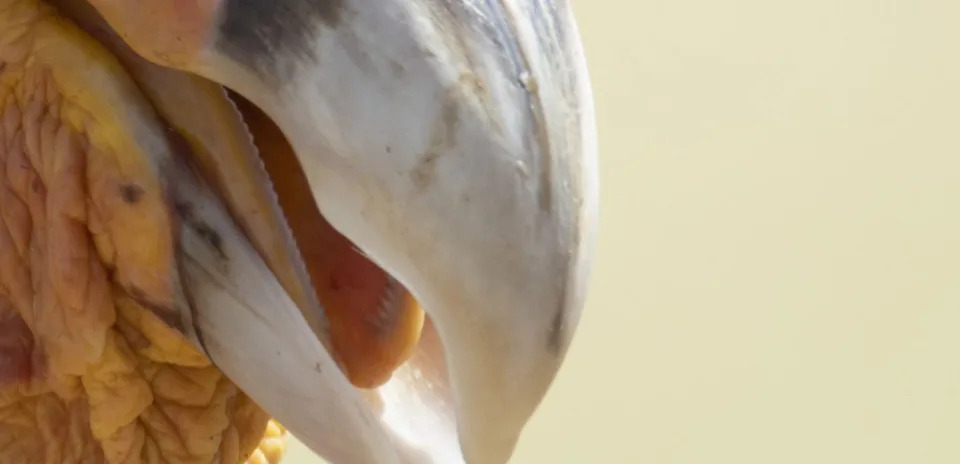Hunting for the truth in a southern Minnesota field? Stay off social media.
By Christopher Vondracek
October 16, 2024
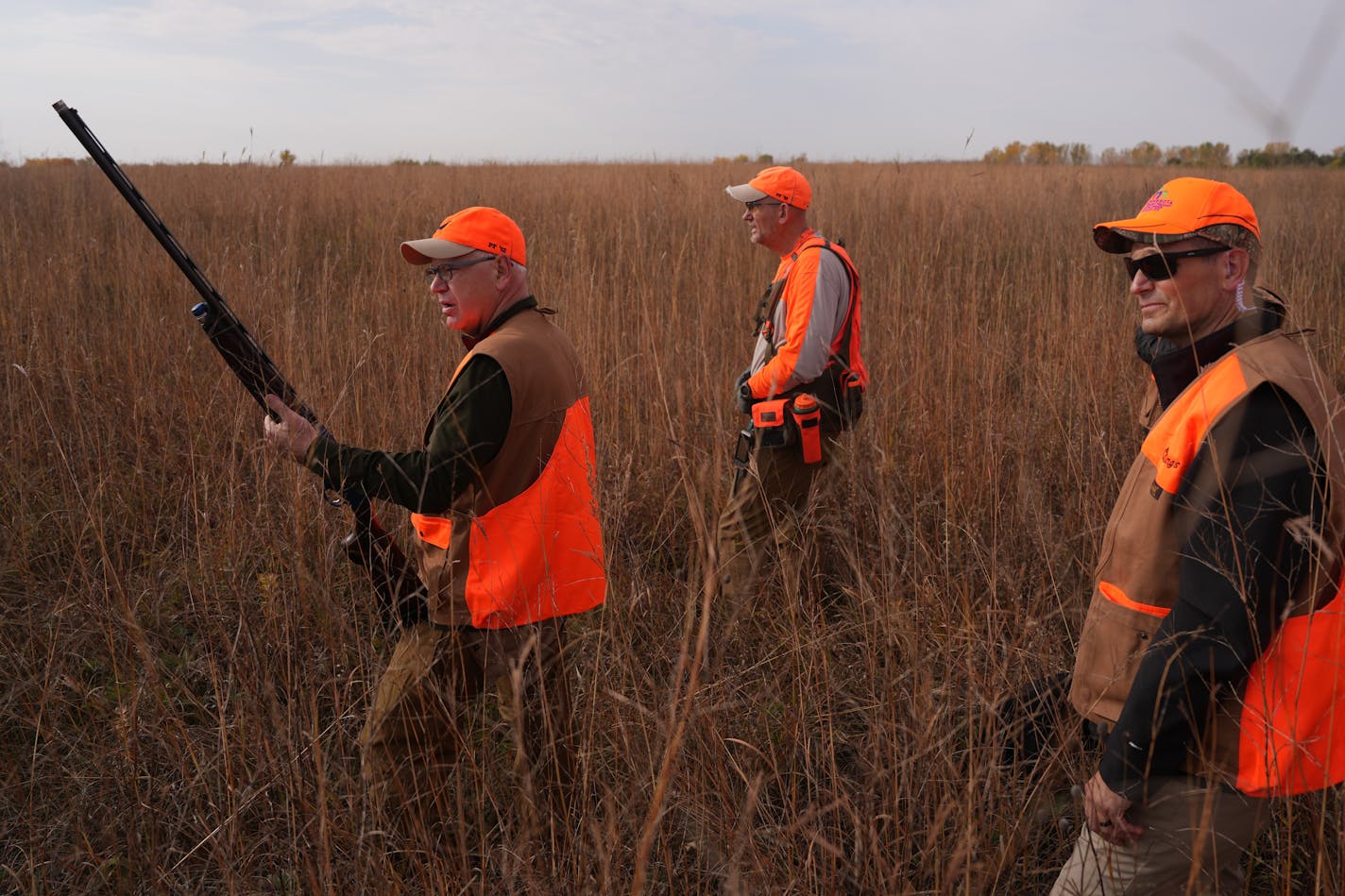
Flanked by his Secret Service detail, Minnesota Governor and Democratic vice presidential candidate Tim Walz looks for birds during the annual Governor's Pheasant Hunting Opener on Saturday near Sleepy Eye. (Anthony Souffle/The Minnesota Star Tribune)
The dogs were tired. The small army of press stalking him needed to put down cameras. And Gov. Tim Walz was fiddling with removing shells from his gun.
Nothing could’ve prepared us for the political bombshell that came next.
As the governor fussed with the firearm on this idyllic October morning southwest of Sleepy Eye, two dozen blaze orange-vested reporters watching, our own Minnesota Star Tribune photojournalist Anthony Soufflé asked Walz if he owned the gun.
“This is mine,” the 60-year-old responded.
And then Walz, who in his first year in Congress de-throned former Rep. Collin Peterson as Democrats’ top shot in the Congressional Shootout of clay pigeons, dispensed a dad joke that would’ve landed well on the gingham tablecloths of the farmhouses he represented for a dozen years in Washington, D.C.
“Borrowing a gun is like borrowing underwear,” Walz said, to chuckles from the press.
And, then ... well, actually that was it.

Minnesota Star Tribune reporter Chris Vondracek, left, joined the press corps shadowing Gov. Tim Walz, center, at the Governor's Pheasant Hunting Opener near Sleepy Eye on Saturday. (Christopher Vondracek/The Minnesota Star Tribune)
Walz talked about his semiautomatic shotgun, a Beretta A-400, mentioned he liked the more forgiving recoil on his shoulders, and then — flipping up the shotgun, shells removed — walked along the tall grass back to the farmsite where he sat on a pick-up, ate venison sticks and talked hunting dogs.
Little did any of us know, however, at that moment, buzzing over the internet around the world, the biggest news event of the day, perhaps an October Surprise, for this vice presidential candidate was, at least in the eyes of the internet, already hatched.
Walz didn’t know how to use his gun.
A CBS reporter next to me had managed to dispatch to X a roughly 30-second clip of Walz un-jamming a gun, and within seconds, the rapacious reviews came pouring in, accusing “Tampon Timmy” of rural play-acting, like being caught redhanded lip-synching at the Super Bowl halftime show.
I, standing in the field, didn’t know any of this at the time. But when I returned to Minneapolis that night, while my wife and sister-in-law made dinner and peppered me with questions, I opened up my phone to check on reactions to my story and, instead, saw a piece from the Daily Mail in London.
“Tim Walz roasted over pheasant hunting stunt,” read the headline.
Huh? I scanned the story.
Was it the underwear joke? Nope.
The fact that he’d hadn’t shot a bird? No, according to trolls on the internet, Walz inelegantly un-loaded his shotgun shells.

Flanked by his Secret Service detail, Minnesota Governor and Democratic vice presidential candidate Tim Walz watches a dog work at the annual Governor's Pheasant Hunting Opener on Saturday near Sleepy Eye. (Anthony Souffle/The Minnesota Star Tribune)
But there were other “hot takes” on the day’s big event.
A Trump campaign page had shared what it called “another angle of Tim Walz fumbling around for his gun” and noted, “Tampon has absolutely no idea what he’s doing.”
Even Rep. Brad Finstad, the southern Minnesota congressman who represents not only Walz’s old district but also hunted in the same county as the governor Saturday morning, put out on X a photo of himself with two pheasants he shot, saying, “Great day for pheasant hunting in Brown County where we typically hunt with our shotguns.”
Was the insinuation that the governor hadn’t even brought his gun?
Sure enough, yes. All across the internet, people had interpreted a still photograph of the governor arriving in the motorcade and walking up to the DNR officer to get his license checked as evidence that Walz had never even picked up a shotgun, just done a blaze orange cosplay.
Look, I’m the paper’s agriculture reporter. Corn, soybeans, occasionally cultivated wild rice. It’s a good gig. Sometimes, due to scheduling conflicts on our politics team, I get to fill in on the other commodity: power. I’ve seen turkeys (not) pardoned in a gilded room at the Capitol. I’ve interviewed senators about flooding in southern Minnesota. Last August, I sat on a rainy stage for 30 minutes chatting with Royce White, the GOP Senate candidate, outside the Star Tribune booth at the State Fair. (I lost a beloved vintage blazer!)
And in some ways, lamenting the social juggernaut of misinformation is a little passé. To borrow an agricultural film metaphor, we are not in Kansas anymore.
But the internet is complicating our democracy. Two weekends ago, I sat on a patio overlooking the Root River in lovely Lanesboro when I overheard a patron insist to a table next to us that the government had orchestrated the tragic hurricane in the U.S. to take out conservative voters.
Even back in August, I had two dear friends insist to me that, actually, Republican vice presidential candidate JD Vance did alight onto a monologue about romantic relationships with couches in his memoir (he didn’t).
These are smart people. Well-intentioned people. We’ve just been overwhelmed by the medium. I’m not a hunter. I went to graduate school for literature. We are in need of rhetorical flotation devices to keep us afloat in the floods.

Gov. Tim Walz compares Pheasants Forever hats with Matt Kucharski before they set out for the annual Governor's Pheasant Hunting Opener on Saturday near Sleepy Eye. (Anthony Souffle/The Minnesota Star Tribune)
So here’s what actually happened last Saturday morning.
First-off, there might not be a Casey’s or Kwik Trip between the Twin Cities and New Ulm that carries a blaze orange stocking cap. That’s a missed opportunity. Because I searched nearly every single one on my pre-dawn ride down from Minneapolis on Saturday morning to the appointed meeting-place on a gravel road to get wanded by Secret Service.
Second, hunting is the most “Downton Abbey” thing we do in American politics. It’s not all foxes and hounds and horses and bugle calls. But it is a little silly. How can you shoot a bird with 20 reporters, 15 staffers, and five social media influencers in tow?
Still, I get it. There is a romantic showmanship to the day. The prairie presents well. And you got to dress warmly, which my East Coast colleagues — in hoodies and sneakers — didn’t. We sat there for what seemed like an eternity until, right before 9 a.m., Walz’s motorcade arrived, and the governor got his pheasant-hunting credentials checked by the DNR officer.
Then, yes, we did do a bit of “fake news.” One of the photographers requested views of faces of the hunting party — consisting of Walz, the president and CEO of Pheasants Forever, a local landowner, and a Nobles County hunter. So, for a performative few minutes, without taking any shots, the group walked toward the mobile media row, holding guns.
Then, finally, around 9:09 a.m. or so, according to the time-stamp on my phone, the actual hunting started.
Quickly enough, as we walked toward some increasingly tall grass, a fluttering ball of might — a male pheasant — flew out of the grass.
“Rooster! Rooster!”
Bam. The bird fell.
Walz called out, “Nice shot.”
The Nobles County hunter, Scott Rall, had downed the bird. But Rall’s intrepid dogs couldn’t actually find the pheasant in the cover. We searched for a while and kept moving.
Over the next 60 minutes or so, with my phone increasingly teetering toward battery doom, we climbed through thickets, tripped over buried logs. The hunters communicated with each other wonderfully in a ridiculous situation. When a hen flew out, they’d call out “Hen! Hen!”, a hunter’s version of “stand down.” When the dogs excitedly dove up and down in the grass, Walz prepped everyone to get ready for a bird.
Yes, he didn’t take a shot. Would that have played better or worse with undecideds in Pennsylvania? I don’t know. There may’ve been chances. Mostly hens flew out. In one moment, a rooster emerged, but the bird was quite young. Maybe other hunters would’ve pulled the trigger. A journalist from an outdoors magazine next to me told another reporter: “I would’ve blasted it.”
Regardless, about an hour into the hunt, I was quite relieved the governor didn’t fire his shotgun. A rooster sprung up in the opposite direction, clear over the heads of the pursuing press corps. Everyone, with cameras, ducked. Everyone, that is, except me. I tried following the bird with my cellphone camera. When I turned, Walz — who’d called out “don’t shoot” — was clutching his gun upright. Then he broke the nervous laughter.
“Every vice president joke there ever was was about to be made right there,” Walz said.
The joke was probably his best shot of the day.
Then we kept hunting. And hunting. Which for the reporters meant walking. And walking. I was reminded of the apocryphal Mark Twain quote: “Golf is a good walk spoiled.” Then, my phone died. Fortunately, I had a laptop in my backpack; I recharged my phone so that, about an hour later, I was able to record the governor just as he was removing his shotgun shells ... and apparently ending his political career.
Then, we walked back to the farmsite. The social media influencers awaited. The Diet Mountain Dew needed to be swigged. One influencer asked the governor his favorite food. Another talked about restoring the country to “sanity.” I mostly just wanted to get on the road to internet and some beef jerky. But we had to wait for a security phalanx rolling a half-dozen cars deep.
Bringing gun-toting hunters around a vice presidential candidate in this political environment certainly could be scary. But the most dangerous place, apparently, was the misinformation superhighway the internet has become.

